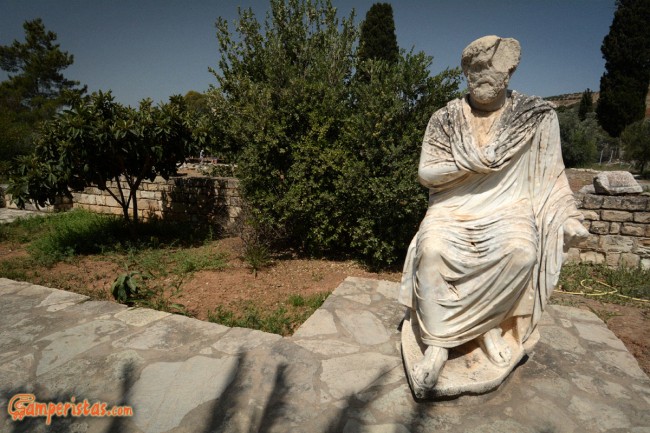
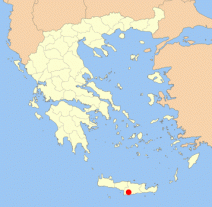 Concluding our tour in the past of Messara’s plain, we headed east to the archaeological site of Gortyn, located 15 km from of the Palace of Phaestos and 18km from the Royal Villa of Agia Triada. Surprise! Unlike to what happened at these sites, where all their treasures were transferred to the Archaeological Museum of Heraklion, one of the most impressive find of the excavation of Gortyn is still here. Maybe it was too heavy for transportation…
Concluding our tour in the past of Messara’s plain, we headed east to the archaeological site of Gortyn, located 15 km from of the Palace of Phaestos and 18km from the Royal Villa of Agia Triada. Surprise! Unlike to what happened at these sites, where all their treasures were transferred to the Archaeological Museum of Heraklion, one of the most impressive find of the excavation of Gortyn is still here. Maybe it was too heavy for transportation…
[sam id=”7″]
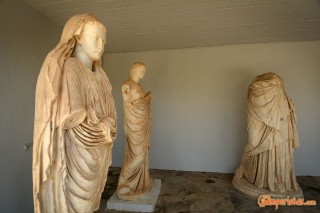 The Minoan past of Gortyn is rather insignificant comparing to its rise during the Classical and mostly during the Hellenistic and Roman times. It flourished without interruption till the 9th c. AD being one of the most powerful Cretan cities of the historic times. It was here where the first silver coins of Crete were minted. Romans embellished the city with marble statues most of them on display in a covered gallery. Unfortunately, not all of them. For the Hellenistic statue of Europa on the back of a bull found here, you should visit the British Museum.
The Minoan past of Gortyn is rather insignificant comparing to its rise during the Classical and mostly during the Hellenistic and Roman times. It flourished without interruption till the 9th c. AD being one of the most powerful Cretan cities of the historic times. It was here where the first silver coins of Crete were minted. Romans embellished the city with marble statues most of them on display in a covered gallery. Unfortunately, not all of them. For the Hellenistic statue of Europa on the back of a bull found here, you should visit the British Museum.
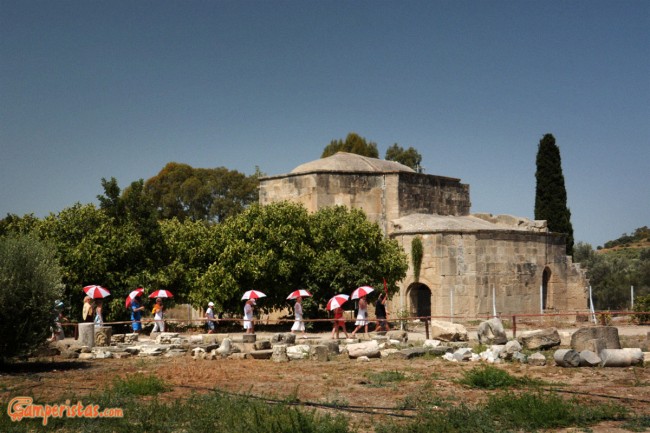
The “star” of the archaeological site is the Great Inscription or Gortyn Code. It is the oldest known example of law inscriptions in the Greek area (6th c. – 4th c BC). It gives us information about differences between social classes and about family affairs such as the rights of divorced women or about children custody, adoption etc. The Gortyn Code reminds us how important was the knowledge of the law in Crete and how highly respected was the Cretan law by the other Greeks during the classical era (for example Plato). The walls with the inscriptions were reused in various buildings but they are now reconstructed.
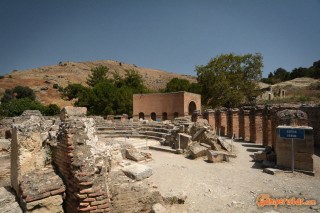
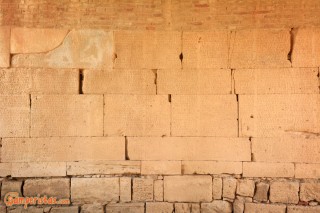
Apart the Code and the Odeon, most of the other parts of ancient Gortyn are closed to the public. The church of Saint Titus, the apostle who founded the first Christian church in Crete, was under restoration during our visit. The temple of Egyptian deities and the temple of Pythian Appolo (both on the other side of the road) were still under excavation. This situation could create some second thoughts about the price of the entrance ticket (4 euros).
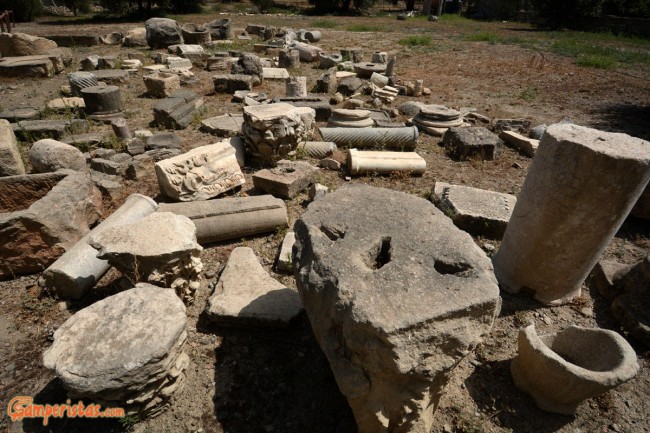
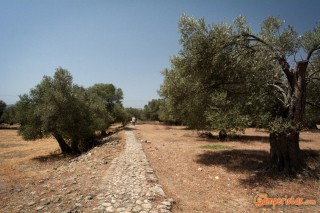 The site is just on the national road which connects Tympaki, the main city of Messara plain with Heraklion. The plain is known for its greenhouse vegetables and fruits which are exported in all Europe, so be prepared to be exposed to the sight and sounds of trucks loaded with tomatoes and cucumbers. Luckily the adjacent farmland is not covered with white plastic sheets (the landmark of greenhouses) but it is surrounded by an ancient olive grove. Even if you don’t want to visit the main archaeological site, it is still worth a stop. Just leave your car in the parking lot of the site [35.06192,24.94801] and cross the street. After a few hundred meters you will see the fences enclosing the temples under excavation. It’s not the same as if you were inside but it’s a nice walk and it’s free of admission!
The site is just on the national road which connects Tympaki, the main city of Messara plain with Heraklion. The plain is known for its greenhouse vegetables and fruits which are exported in all Europe, so be prepared to be exposed to the sight and sounds of trucks loaded with tomatoes and cucumbers. Luckily the adjacent farmland is not covered with white plastic sheets (the landmark of greenhouses) but it is surrounded by an ancient olive grove. Even if you don’t want to visit the main archaeological site, it is still worth a stop. Just leave your car in the parking lot of the site [35.06192,24.94801] and cross the street. After a few hundred meters you will see the fences enclosing the temples under excavation. It’s not the same as if you were inside but it’s a nice walk and it’s free of admission!
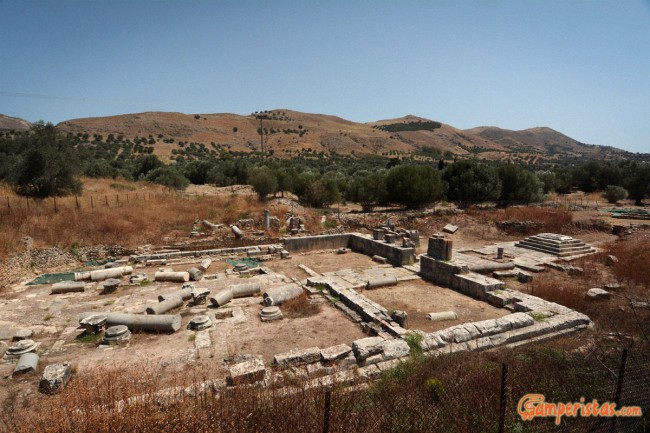
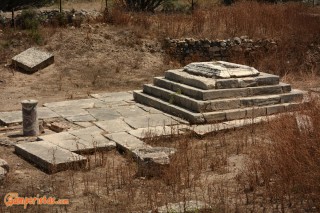
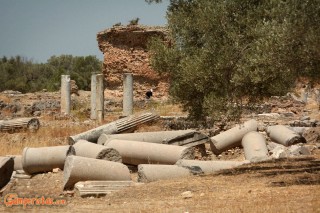
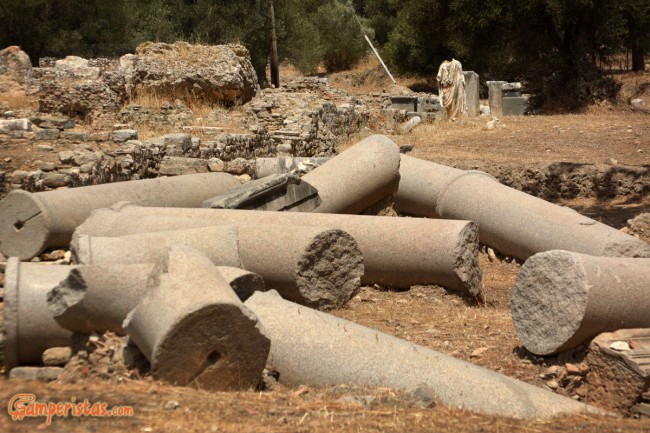
[sam id=”7″]

